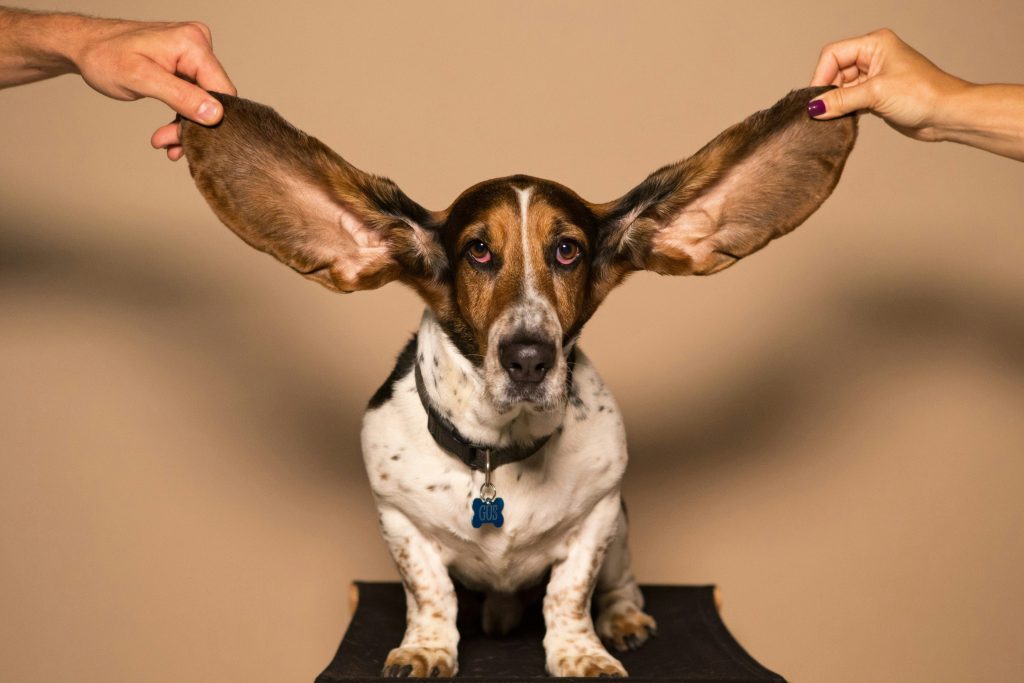- You are here:
- Home »
- Blog »
- Boston Dog Trainer »
- Signs Your Dog Might Have an Ear Infection
Signs Your Dog Might Have an Ear Infection
Signs Your Dog Might Have an Ear Infection
Dogs can’t tell us when something hurts—but they can show us. When it comes to ear infections, most dogs will exhibit clear physical signs and behavioral changes. Learning to recognize these symptoms early helps you seek treatment before a mild issue turns into a major one.
In this post, we’ll go over the most common signs of ear infections in dogs and how to know when it’s time to call your vet.

Why Dogs Show Symptoms Quickly
Ear infections are painful and irritating for dogs. Because their ears are sensitive and their ear canals are shaped like an L, even a small buildup of bacteria, yeast, or wax can cause discomfort fast.
Luckily, dogs often show very visible signs of distress, so if you know what to look for, you’ll be able to take quick action.
Top Signs of a Dog Ear Infection
1. Head Shaking
One of the most noticeable signs is frequent or violent head shaking. Your dog might try to dislodge the feeling of pressure or fluid in their ears.
Head shaking that seems excessive—especially if it’s new behavior—warrants a closer look.
2. Scratching at the Ears
If your dog is pawing at their ears or rubbing their head along the ground or furniture, it’s likely because they’re itchy or in pain.
Be cautious: excessive scratching can cause scrapes or hematomas (swelling from broken blood vessels), which may require additional treatment.
3. Odor From the Ears
A strong, musty, or yeasty smell coming from your dog’s ears is a classic sign of infection. This odor usually comes from yeast or bacteria overgrowth in the ear canal.
Trust your nose—healthy dog ears shouldn’t have much of a smell.
4. Redness and Swelling
Look inside your dog’s ear flap and ear canal. If you notice:
-
Red, inflamed skin
-
Swelling
-
Dark or crusty debris
…these are likely signs of an active infection. Healthy ears should be light pink, smooth, and free of discharge.
5. Discharge or Buildup
Ear infections can produce a variety of discharges:
-
Brown or black gunk (often yeast or ear mites)
-
Yellow or green pus (typically bacterial)
-
Wet, waxy buildup that smells bad
Any visible ear discharge is a sign your dog needs a vet visit.
6. Sensitivity or Pain When Touched
If your dog pulls away, flinches, whines, or even growls when you touch their ears, it may be due to pain. This could be a result of inflammation, infection, or pressure inside the ear canal.
Severe pain can signal a middle or inner ear infection, which requires prompt medical care.
7. Balance Problems or Head Tilting
Infections that reach the middle or inner ear can impact your dog’s balance. You might notice:
-
A tilted head
-
Walking in circles
-
Difficulty standing or walking straight
-
Unusual eye movements (nystagmus)
These signs indicate a more advanced infection and should be addressed immediately.
8. Changes in Behavior
Any time your dog seems unusually:
-
Irritable
-
Lethargic
-
Disinterested in food or play
…it may be due to discomfort or pain. Watch for these mood shifts, especially when paired with other ear symptoms.

When to See the Vet
If you notice one or more of the signs above, it’s best to get your dog checked out. Your vet will examine the ear canal, possibly collect a sample to look under the microscope, and recommend the best treatment.
Don’t try to self-diagnose or treat at home without veterinary guidance. Using the wrong type of ear cleaner or medication can make things worse.
How Fast Do Symptoms Show Up?
Ear infections can come on suddenly, especially if triggered by:
-
A swim or bath
-
Allergies flaring up
-
A foreign object in the ear
-
New food or environmental exposure
In some dogs, symptoms appear gradually, especially if the root cause is allergies or excessive wax buildup.
Track Your Dog’s Symptoms
If your dog is prone to ear problems, consider keeping a journal of:
-
When symptoms appear
-
What they ate or were exposed to recently
-
Whether weather or allergens may be involved
-
How long symptoms last and what treatments helped
This information helps your vet pinpoint underlying causes and create a personalized prevention plan.

Final Thoughts
Catching an ear infection early is the best way to ensure fast relief and avoid complications. From head shaking and odors to changes in balance or behavior, your dog’s symptoms are their way of saying, “Something’s not right.”
